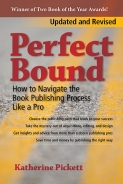A few years ago I read Jeannette Walls’s Half Broke Horses: A True-Life Novel. It is the fictionalized tale of her grandmother and mother living on the frontier. It was a lovely book and I highly recommend it.
I have just one reservation: In fictionalizing the story, Walls did not go far enough. She did not fully commit.
This choice left me feeling somewhat unsatisfied. I wanted a fuller story—a novel.

Before and since that time, I have seen the same problem with some of my clients’ works as well as in published books. After the A Million Little Pieces fiasco, more people are hesitant to call their memoirs nonfiction if they include anything not verifiably true, and they are opting to fictionalize. Here is my advice to those authors:
If that is your decision, then embrace it!
Employ all of the tools of storytelling that are available to a novelist to make your fictionalized story a worthy read:
- Develop back stories for your characters
- Invent dialogue and settings
- Embellish feelings and reactions for your characters
- Rearrange events and create new ones
In sum, fill in the details you don’t remember or never were told, to craft a full-bodied story that readers will enjoy.
Detach yourself from reality!
Some authors are reluctant to create something for fear of not being true to the story they wish to tell. I believe it is possible to capture the essence of an event while placing it in a different setting or inventing dialogue that you have no way to verify.
But fictionalizing isn’t just about filling in the details. Novelists have even more tools that keep their stories moving. You can use them too!
- Combine or eliminate characters
- Skip events that don’t fit with the narrative arc
- Summarize background information
- Leave out the details that don’t move the plot or aid character development
Omitting information can be as difficult as inventing it when your goal is to be true to your story. Yet, the best storytellers know when to expound on a seemingly minor detail and when to bridge over events that don’t contribute to the effect they want to achieve.
You have to do what is right and best for your work. Let the shackles of reality go, and commit to the genre you have chosen.
When you fail to commit, you leave readers adrift.

Like this blog? Find more insights and advice in the Updated and Revised Edition of Perfect Bound: How to Navigate the Book Publishing Process Like a Pro, now available on Amazon!